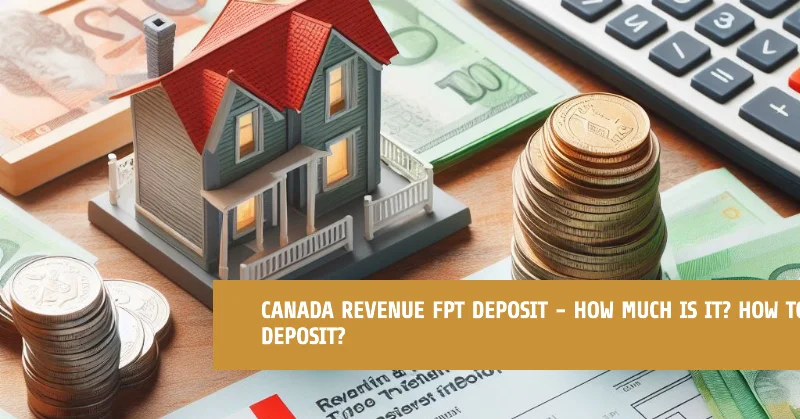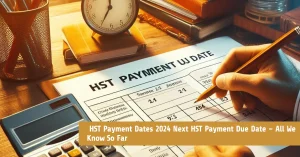For Advertising Contact Us
Canada revenue fpt deposit – How Much Is It? How to Deposit?

Deposit amount for Federal-Provincial-Territorial (FPT) taxes can vary depending on your business transactions and revenue. Understanding how much to deposit and how to do it correctly is crucial for businesses to avoid penalties and ensure compliance with Canadian tax laws. In this guide, we will examine into the specifics of Canada Revenue FPT Deposit – providing you with necessary information on the amounts involved and step-by-step instructions on how to make your deposit accurately and on time.
Types of Canada Revenue FPT Deposits
To effectively manage your tax obligations in Canada, it is crucial to understand the different types of Canada Revenue FPT deposits that you may encounter. These deposits include federal tax deposits and provincial tax deposits.
| 1. Federal Tax Deposits | 2. Provincial Tax Deposits |
| Income tax, GST/HST, payroll deductions | Provincial income tax |
| Deposited using the My Business Account online portal | Payments vary by province and may include corporate tax, health and education levies |
| Stricter penalties for non-compliance | Effective management is crucial to avoid penalties |
| Schedule a payment date or use pre-authorized debit | Deposits usually required on a monthly or quarterly basis |
| Knowing your obligations is crucial for timely deposits | Timely remittances are crucial to avoid interest charges and penalties |
Federal Tax Deposits
While managing federal tax deposits, it is important to note that the deposits typically include income tax, GST/HST, and payroll deductions. These deposits can be made using the My Business Account online portal, offering convenience and ease of access. Stricter penalties are enforced for non-compliance, emphasizing the importance of ensuring timely and accurate deposits to avoid penalties.
Provincial Tax Deposits
An crucial aspect of managing your tax obligations in Canada is handling provincial tax deposits. These deposits vary by province and may include payments for provincial income tax, corporate tax, as well as health and education levies. For instance, timely remittances are crucial to avoid interest charges and penalties, highlighting the significance of staying informed about your specific provincial tax requirements.
Step-by-Step Guide to Making a Deposit
It is crucial to understand the process of making a deposit to Canada Revenue FPT efficiently. The following information breaks down the steps involved in depositing funds seamlessly.
Preparation Before Depositing
Making a deposit to Canada Revenue FPT requires some preparation. Ensure that you have your account information ready, including your banking details and the amount you wish to deposit. Additionally, verify the correct payment method accepted by Canada Revenue FPT to avoid any delays in processing.
The Deposit Process
To initiate the deposit process, access your banking institution’s online banking portal. Locate the option to make a bill payment or an electronic fund transfer. Enter Canada Revenue FPT as the payee, along with the amount you intend to deposit. Verify all details before confirming the transaction.
Guide: When making a deposit, double-check all the information provided to ensure accuracy. Any errors could result in delays or incorrect deposits. Once the transaction is confirmed, keep a record of the deposit for future reference. It is important to follow secure banking practices to protect your personal and financial information.
Tips for Simplifying Your FPT Deposit
Despite the complexities of Canada Revenue FPT deposits, there are ways to streamline the process and make it more manageable. By following these tips, you can ensure that your deposits are timely and accurate, avoiding any potential penalties or issues with the Canada Revenue Agency (CRA).
Keeping Accurate Records
Records are crucial when it comes to Canada Revenue FPT deposits. Keeping detailed records of all your transactions, including the amount deposited, the date of deposit, and any relevant reference numbers, can help you track your payments and reconcile any discrepancies that may arise.
Utilizing Online Services for Deposits
Services like the CRA’s My Business Account or online banking can make Canada Revenue FPT deposits quick and convenient. It allows you to schedule payments in advance, receive instant confirmation of your deposits, and avoid the hassle of paper cheques or manual transactions.
Any errors in your FPT deposits can result in penalties or fines, so it is vital to stay organized and take advantage of online services to simplify the process and ensure compliance with CRA regulations.
Factors Affecting the Amount of FPT Deposit
Income Level and Source
For Canada Revenue FPT deposit, the amount you need to deposit can be influenced by your income level and source. Individuals with higher incomes may be required to contribute a larger amount to their FPT deposit compared to those with lower incomes. Additionally, the source of your income, such as employment earnings or investment income, can also impact the FPT deposit amount.
Knowing your income level and source is crucial in determining the appropriate amount to deposit for your FPT.
Tax Credits and Deductions
To ensure the correct amount for your Canada Revenue FPT deposit, consider the tax credits and deductions you are eligible for. Tax credits and deductions can help reduce your overall tax liability, which in turn affects the amount you are required to deposit. It is important to take advantage of all eligible tax credits and deductions to lower your FPT deposit.
Plus, understanding how tax credits and deductions work can significantly impact the final amount you need to deposit for your FPT.
Pros and Cons of Different Deposit Methods
Many individuals wonder about the various methods available to deposit funds to their Canada Revenue FPT account. Each method has its own set of advantages and disadvantages, which should be carefully considered before making a decision. Below is a breakdown of the pros and cons of different deposit methods in a convenient table format:
| Deposit Method | Pros and Cons |
| Direct Bank Deposits | Convenient but requires access to banking services |
| Mailing Cheques or Money Orders | Traditional method that can be slow and unreliable |
Direct Bank Deposits
Deposit: One popular method to deposit funds to your Canada Revenue FPT account is through direct bank deposits. This method allows for quick and easy transactions directly from your bank account to the revenue agency. However, it does require access to online banking or visiting a bank branch.
Mailing Cheques or Money Orders
Methods: Another option for depositing funds is by mailing cheques or money orders to the revenue agency. While this method is traditional, it may take longer for the funds to be processed, and there is a risk of the payment getting lost or delayed in the mail. It is important to use registered mail or tracking services to ensure the payment reaches its destination.
To mitigate any potential risks when mailing cheques or money orders, it is advisable to keep records of the payment, including the amount, date sent, and recipient information.
Conclusion
On the whole, understanding how much the Canada Revenue FPT deposit is and how to make the deposit is crucial for individuals and businesses to fulfill their tax obligations. Being aware of the amount to deposit and the various methods available for submission ensures timely and accurate contributions to the government. By following the guidelines and instructions provided by the Canada Revenue Agency, taxpayers can smoothly navigate the process and avoid any penalties or issues related to their FPT deposits.



